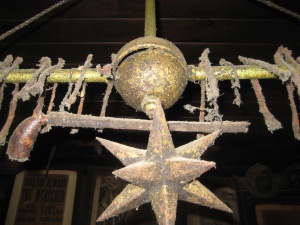 New York City has always had its homeless.
New York City has always had its homeless.
But their numbers increased here and across the country after a recession in 1913, and again when World War I broke out and Europe no longer placed orders for American goods.
What to do about all the hobos and tramps, as they were called then, were a much talked-about problem. Soon an idea was hatched: build a self-managed chain of hotels for down on their luck, itinerant men who would pay for their room and board by working at the hotel a few days a week.
The first “hotel de Gink” (gink was contemporary slang for a hobo) opened in Seattle later that year. The brainchild of Jefferson Davis, a man who dubbed himself “King of the Hobos,” Seattle’s hobo hostel earned national attention.
By 1915, New York’s Hotel de Gink was operating in a former button factory downtown at Centre and Worth Streets. Davis presided over a strangely celebratory opening gala on January 21 that was attended by vaudeville performers, politicians, and about 100 homeless men who moved into the hotel.
“The factory building at Worth and Centre Streets, where the Gink house was established, had lost all of its dreariness last night,” reported the New York Times the next day.
Davis insisted that the hobos were there to earn an honest living. “You will all be surprised when you see how we pay our way with cash and earn cash to pay it, and not by taking anybody’s job either,” he told a Times reporter. “We never cut the union rate and we never take a job a regularly employed person might be able to get.”
“While everybody has been shouting about doing something for the unemployed here we have got in without anybody’s help in the way of money and done a whole lot for ourselves.”
For a while, the Hotel de Gink seemed to run smoothly. Residents paid $10 a month rent to the city for the building. They took odd jobs, made mulligan stew and coffee for one another, and even held social events. According to Davis (in photo above), 15,000 men passed through its doors.
In 1921, the Hotel de Gink had closed. The homeless were certainly still in New York City, but why they had to find other lodgings isn’t clear.
[Photos: G.G. Bain/Library of Congress]







